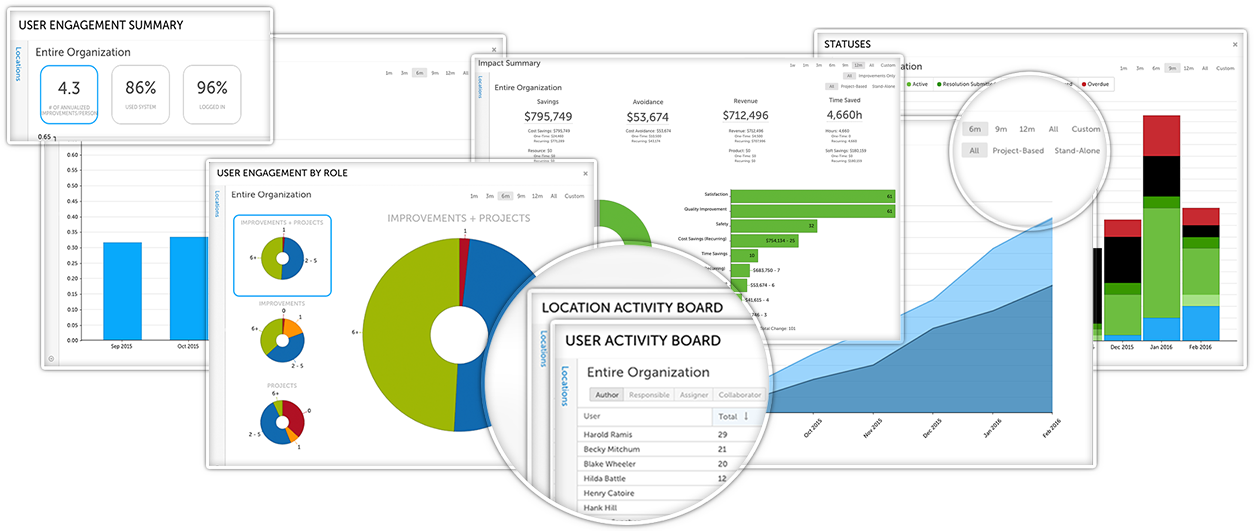 Flexibility is perhaps one of the essential qualities of successful companies in today's hyper-competitive environment. The ability to quickly adapt to changing marketing conditions and customer needs is crucial to modern companies' survival. Organizations with leaders and teams prepared to change when necessary can capture new opportunities, respond to threats, and impress customers.
Flexibility is perhaps one of the essential qualities of successful companies in today's hyper-competitive environment. The ability to quickly adapt to changing marketing conditions and customer needs is crucial to modern companies' survival. Organizations with leaders and teams prepared to change when necessary can capture new opportunities, respond to threats, and impress customers.
Improvement management software prevents change from becoming chaos. Improvements to processes should be made thoughtfully, using a structured improvement cycle like PDSA or DMAIC. With improvement software in place, innovation becomes deliberate, and the process behind each improvement is transparent. Here are six ways that improvement software helps to promote sustained and purposeful innovation.
#1 – Get Timely and Actionable Feedback
Improvement management software is a common platform for every employee to suggest opportunities for improvement whenever they arise. Leaders don't have to call a meeting or beg for suggestions. Each manager knows exactly what to do when they have a chance to consider. Once the idea is submitted, the process of review and potential implementation automatically begins. Look for software with built-in alerts and email notifications so that forward progress is maintained.
#2 – Personalized User Experiences
Every person has different concerns and responsibilities. The best improvement management solutions make it easy for people to set up dashboards and filter information to find helpful information. Simultaneously, the solution puts each person's efforts into the larger context, allows team members to see how their work fits into the big picture, and gives them access to the lessons learned by other people and teams.
#3 – Bridge Functional Silos
Improvement software makes it easy for people to collaborate directly, even with those in different departments or operations. Direct connections between people on multiple teams help reduce friction and cause improvement projects to move faster. Subject matter experts can get involved when necessary, and people can seek help from others who have experience with a particular type of improvement.
#4 – Easily Align Goals
Team members working hard to excel at their job can lose sight of the organization's overall objectives. Organizations achieve the best results when each individual, team, and department has goals aligned with the overall strategy. Improvement software lets leaders cascade objectives down from the strategic level to individual contributors.
#5 – Enjoy Visual Management
You may think your organization is engaged in continuous improvement, but can you see it? The best improvement management technology provides dashboards and reports so that the health of innovation within the organization is apparent at a glance. Control charts, kanban boards, huddle boards, X-matrices, and other visual tools can all be managed by improvement software.

#5 - Measure Impact
Organizations shouldn't change for the sake of changing. It is vital to measure each improvement's impact to discover what has worked well and should be replicated. It is motivating for people to see the result of their improvement efforts accumulate over time. The best solutions will capture the long and short-term impact of every improvement.
#6 – Recognize Success
In addition to tracking each change's impact, successful organizations recognize and reward those who contribute to positive change. Look for a solution that allows you to broadcast successful improvements in real-time. This a significant boost to the people you are acknowledging and a great way to remind everyone else that innovation is prized within your organization.
Positive change requires an engaged team. Your improvement management solution can bring your staff together and focus their efforts on the improvements that are in line with your organization's breakthrough objectives.




Add a Comment